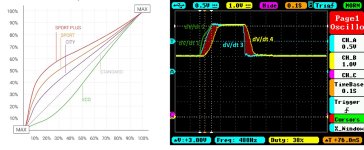BajaRon
Well-known member
Fuel consumption is already fairly lame on my Rally so I'll pass on fitting a gadget that makes it drink even quicker. Then again...maybe in a few years though, once I've learnt to ride it round corners properly.....
Personally, I don't think the Ryker needs a throttle modifier. It comes stock with a pretty responsive throttle. Probably more due to the CVT than the ECU. Apples and Oranges between the 2 machines. We've put some Pedal Boxes on Rykers. But we always try to enlighten customers with our opinion that they are not necessary before doing so.


